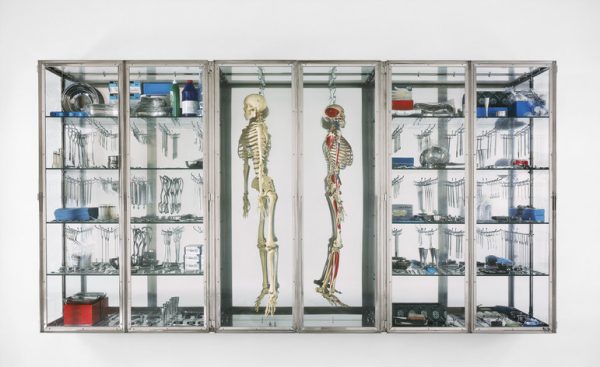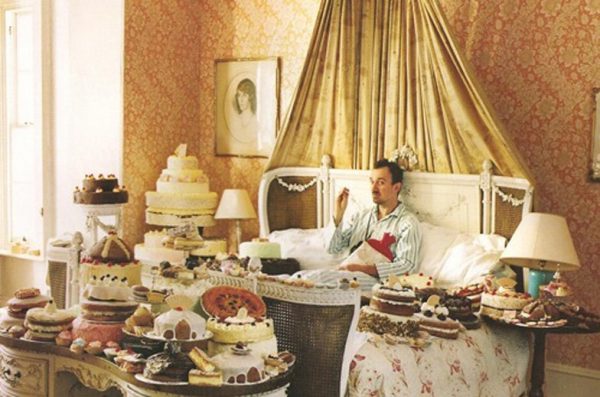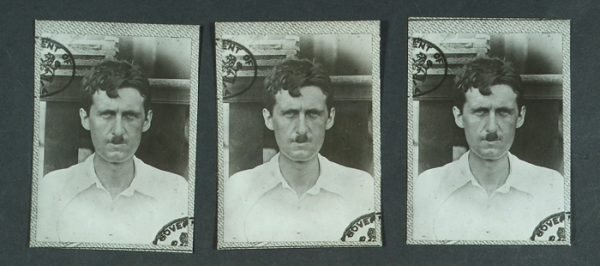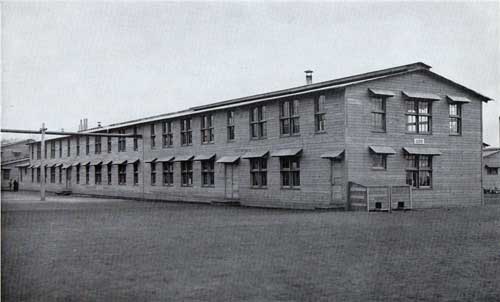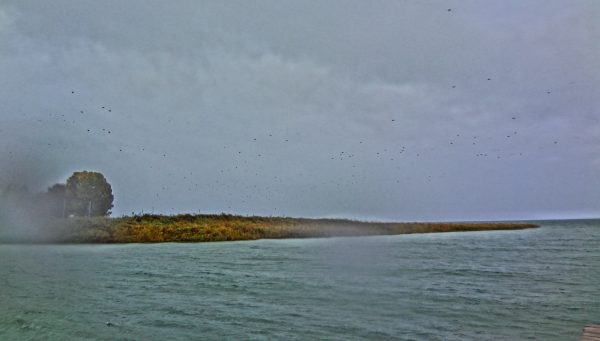Abstract
Preparations for experimental work must be conducted without interruption to ensure experimental success. In this work, the impact of a spontaneous intervention is observed on the pouring of agar media for petri dishes. Andrew, a technician, gives a book to G. during the preparation of microbiological nutrients. The subsequent disruption of the protocol is recorded and measured. In this study, the disrupting vehicle is a photography album containing pictures that the subject supposes to be herself. The source and nature of the pictures is considered, and a relationship between the observation of the photographs and the connection to human memory is postulated.
Introduction
Performing microbiology experiments with aseptic technique is a standard part of good laboratory procedure. Prior to culturing bacteria, a mixture of nutrients and agar is heated above 100°C in an autoclave to sterilise, and then allowed to cool. The mixture cools and begins to solidify below 42°C,enabling the scientist to pour the media mixture into petri dishes, where the media sets to form a solid material (Miller et al, 1987). Executing this protocol swiftly, and using a flame to maintain a sterile working environment prevents contamination occurring.
G. is a postdoctoral scientist studying a type of bacterium which makes pigments. She has been practising aseptic technique for some time. Her procedure of preparing petri dishes has historical links (c.f Bertani, 2004) and other scientists such as Koch, MacConkey and Churchman who have developed recipes for microbial culture.
Supporting scientific research with technical support is key to long term continuity and maintenance of equipment. Andrew is a laboratory technician who works on gas chromatography. Like many university employees of his grade, he is on a temporary contract. His role does not require close contact with G. and in this respect she regards him as an acquaintance. They share adjacent laboratory spaces, in a basement building which has been constructed to maximise the working area at a crowded urban campus.
Materials and Methods
Characters: G., a postdoctoral researcher, was acquired from the University of Durham, following a four year Research Council-funded project on the inheritance of gut bacteria in ladybirds. Andrew, a technician, had begun a Ph.D. on metabolomics, but subsequently terminated his research and was added to the department’s team while an alternative arrangement was implemented.
Microbiology Reagents: LB media was prepared according to the manufacturer’s instructions. All chemicals were purchased from Sigma UK.
Photography album: A navy 42-page bound vellum book containing 20 colour photography plates which had been prepared by adhering 5x7inch photographs to alternate pages. The first and last pages were left blank.
Results and Discussion
G. has prepared the workbench in accordance with her interpretation of aseptic technique. She has autoclaved the growth media and is anticipating the arrival of the media to 42°C as the correct temperature for pouring. In this part of the experiment, she has eschewed a musical accompaniment as she prefers to work in silence. G. is wearing green latex lab gloves which have powder on the inside. When she removes them, residue clings to her fingers. She wipes her fingers on her lab coat and searches for a lighter in the lab next door in order to ignite the Bunsen burner. She can see Andrew working in a room further down the corridor, fiddling with a machine, calibrating a sensor. He is bowed so intently over his work he appears decapitated.
G. returns to her bench and replaces her gloves. At the current rate of cooling she had calculated that she had sufficient time to prepare the petri dishes. However, the dishes require labelling, which must be completed in under 3 minutes in order to prevent the media cooling and solidifying excessively. Andrew pushes the door open and dialogue commences. See Figure 1.
During this exchange, it can be observed that G. is not fully committed to the dialogue. She has made an error when labelling the plates, which has led her to discard the ones with mistakes, rather than striking through the incorrect date with the marker pen. In Figure 1, the statement of photographing plates is false, but the supposition that G. would like to maintain the perfection of the prior set up is upheld.
Figure 1: Dialogue in laboratory between Andrew and G.
‘You still here? You like to work late these days’
‘It is better at this time. Anyway, you are here too, so it isn’t really that weird is it?’
‘What are you doing? That’s a bit wasteful, isn’t it? Do you always throw them away when you do that?’
‘I was just hoping to do it neatly for once, as I’d like to photograph these later’
‘Oh, I see’
Andrew comes nearer to the bench where G. is working. It has been observed by G. that he has a habit of hovering in close proximity to where she is stood. The distance is estimated to be approximately one metre which is close enough that G. can see the beginnings of stubble pushing their way through on his pale face, like little sprouts emerging on white soil. His skin is translucent in places, allowing G. to see blue veins underneath the surface.
G. notices that Andrew is swallowing a lot. His prominent Adam’s apple descends and ascends with a frequency of 0.1 Hertz.
The continued presence of Andrew is causing irritation to G. who is reluctant to perform the act of flame sterilising the lid of the media bottle in his presence. The inhibitory gaze of her fellow human being has caused G. some anxiety, as the media bottle is approaching 50°C and the next stage of pouring should be completed imminently. While there is no reason for G. to come up with a new line of conversation, a social pressure has given her a sense of obligation to say something else to Andrew. The exchange is detailed in Figure 2.
Figure 2: Second exchange of dialogue in the laboratory between G. and Andrew.
‘Do you go through many of these? You should maybe think about making your own reagents.’
‘At times I do, yes. But I got a good offer, and really isn’t your time worth money? Anyway, more consistent. Ah.. have you much more to do this evening on your machine?’
‘Eh, no. Was just working on the…eh…. I was just sorting out the machine for tomorrow and I thought I’d bring, athingIvebeendoing … to … here –’ [he touches a pile of what at first appear to be lab books]
‘Mmmhmmm?’
‘-it’s a book-’
‘Oh, OK.’
‘-its for you. About you, sort of. You can see.’
‘Sure. Give it here.’
G. rolls her gloves off and places them into her pocket. To remove the traces of powder she trails her fingers on the side of her labcoat for a second time. As evidenced by Figure 2, the terse exchange would imply that Andrew has coerced G. into suspending her experimental preparations by his mere persistence. G.’s acceptance of the book is made on the basis that it will be something stupid, a lab in-joke that she can hand back after a glance with a coarse ‘oh verrry good’ groan.
During the handover of the book Andrew’s hand trembled. In previous encounters G.’s perception of the technician was that he always looked so cold and frigid she didn’t think he was capable of sweating. However, upon accepting the book she noticed there were perspiration fingerprints on the canvas binding.
G. opens the book and the crackle from the glue reacting to the spine was audible. A sample of photographic descriptions are detailed in Figure 3, along with correlating responses from G. A full list of photograph plates are included in ‘Supplementary Materials’, available online.
In this exchange of materials, it is assumed that Andrew was not expecting G. to exit the lab and run in the direction of the ladies toilet, which was located two left turns down the corridor.
Figure 3: Five examples of the relationship between visual images and subject responses
|
Photograph description
|
Reaction from G.
|
||
|
1. A family posing in front of a picnic bench, in front of a path leading through some pine trees to a lake. On the path was a girl beside what was presumably her father. She was red-headed and wearing a pink jumper.
|
Recognised jumper resembling one she used to own.
|
||
|
2. Scene at a ski slope. There were Austrian flags. A man is posing in the foreground of the picture, pointing uphill with this ski pole. In the background a group of children are queuing for the ski-lift. Two girls are wearing identical salopettes, green, with matching purple jackets as well. The redhead one is turned to face the camera, adjusting her headband.
|
Subject mused about the time she went with school, and marvelled at the chocolate-box houses with their neat roofs. Certainty that redhead girl was self.
|
||
|
3. Crowd scene on shopping street, junction at Oxford Circus.
|
Subject recognises self waiting at bus stop with a particular handbag.
|
||
|
4. Tourist photograph of a lady wearing a sarong on a beach. In background another group is posing for a photograph, and a girl is setting a self-timer on a camera and pointing at the group.
|
Subject recalls holiday and taking this photo prior to a jet-skiing excursion.
|
||
|
5. The river Thames on a grey day. A couple clasp each other on the millennium bridge, with their backs to St Paul’s. A girl is there on the bridge too, with her head down and grasping her scarf close to her chin.
|
Recollection of the day in question. G. remembers the biting damp cold. She wanted to go to the Tate Modern. G. states that she had a break up, or a bad day, or had an unrequited love confirmed. She wanted something warm and vivid and otherworldly to remind her that something else could come out of the human brain than sorrow and want.
|
G. thinks she needs to vomit. She continues to hold the book with her finger at the last page she was on. The automatic light hesitates, and G. lunges in the direction of the furthest of the two cubicles. G. splays her arms. The book balances on the sanitary bin. She retches, but nothing comes out. Beads of perspiration form underneath her fringe. She stays in the kneeling position for a while, and watches her reflection in the still water of the toilet bowl. She spits, and the girl down there quivers. Afterwards she sits on the floor, with her back against the cool tiled wall. G. observes that she is satisfied at her presence of mind during the desperate moment to choose this particular cubicle because the other one had a laminated MDF wall. The rubber soles of her trainers do not slide along on the floor, and G sits with her knees resting at the edge of the porcelain bowl.
During this time period, G. has the following thoughts: 1. It feels violating somehow to see these photos. 2. I wonder if Andrew will stay in the lab, or if he’ll come into the toilets. 3. Will Andrew run away and kill himself since this bizarre project must be borne from a sick obsession. 4. What should have been the correct reaction to this event.
As the Bunsen flame is still on G. returns to the lab in order to prevent a naked flame being left unattended. Despite her dread of interacting one more time with Andrew, G. has re-entered the room and observes that he is no longer there. The agar has begun to stiffen which means that the petri dishes cannot be poured and the contents will have to be reheated to become molten once more. Inside her right front jean pocket G. finds £3.67. Her house keys are attached to her ID card around her neck. Transit to her house can be undertaken without recourse to the office, thus reducing the probability of seeing Andrew.
In the corner of the lab are two bins. One is yellow, for non-contaminated waste, and another one is red, for material to be incinerated. G. proceeds to place the book down on top of the red bin bag, hearing plastic containers buckle underneath. She seals the top with tape, binding it around and around. It twists and doubles and wraps itself between her fingers but she succeeds in securing the bag for disposal. G. tosses the red bag containing the book inside the exterior bin and locks it with the combination. She notes that the bin men will collect the waste tomorrow.
G. has never before paid cash to buy a tube ticket. Her fingers fumble at the machine and the unfamiliar task. When she arrives at her address, her flatmates are out. She showers for 28 minutes.
Andrew is not there the next day, or the next, and then it is the weekend. G. begins to feel regret that she has disposed of the book before analysing it properly. Five months pass. G.’s contract ends and she takes up a new position in a bright lab on the first floor with large windows and peace lilies growing on the sills.
G. passes the psychology building on her way to and from her new department. She notices a poster advertising a seminar one day. Upon reading it, she has a sensation of unease. The title of the talk is ‘Suggested Memory’. There is a photo of the speaker. She has dark hair and a frightened face. The surname is vaguely familiar to G. The subtitle reads ‘On Doctored Photographs and Suggestibility’.
Conclusion
In terms of preparation for her experimental work, it can be observed that G. was not successful in this instance in her attempt to pour media into petri dishes. It cannot be known if Andrew had completed his calibration task that evening, or if it had been invented as an excuse to engage with G. as she was working alone.
The dialogue presented in Figure 1 and 2 distinctly implies that Andrew had a greater desire to communicate with G. than the inverse. Nevertheless, it was G. who perpetuated conversation in Figure 2. Sufficient data exists to suggest that the exchange of the book would have occurred even without the extension of the verbal exchange.
The central problem of the origin of the book still remains. In the present day, access to digital images of a person is possible even without their consent. For example, via contacts on social media or web searches. It is known that G. did not hold an account with any networking sites (personal communication, unpublished data) but this does not preclude the upload of files by other persons known to G. The composition of the photographs consistently demonstrated that G. was not the primary object being observed, therefore it is unlikely that the pictures could have been in her possession. The time span of the photographs precludes digital, although with the advent of scan and upload trends, it could be surmised that this is a possible means of acquiring the pictures. Another potential route is via master negatives held at photography processing warehouses.
The reaction of G. to the presentation of the pictures did not correlate with the normal responses of individuals expressing pleasure. This is further evidenced by the disposal of the book. While regret was noted in subsequent days, G. did not take any action to contact Andrew and ask for another copy to be produced.
Following the observation of the seminar discussing suggested memory, the connection between G.’s experience and the topic of presentation is implied. Psychologists have employed techniques of doctored photographs in the past, such as suggesting participants had taken hot air balloon rides when in actual fact they hadn’t (see Wade et. al, 2002). The physical resemblance of the speaker to Andrew had led to G. suspecting the ‘truth’ of the photography album she was presented with five months previously. However, as the album has since been destroyed, further research is needed to verify this link.
